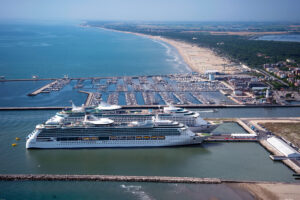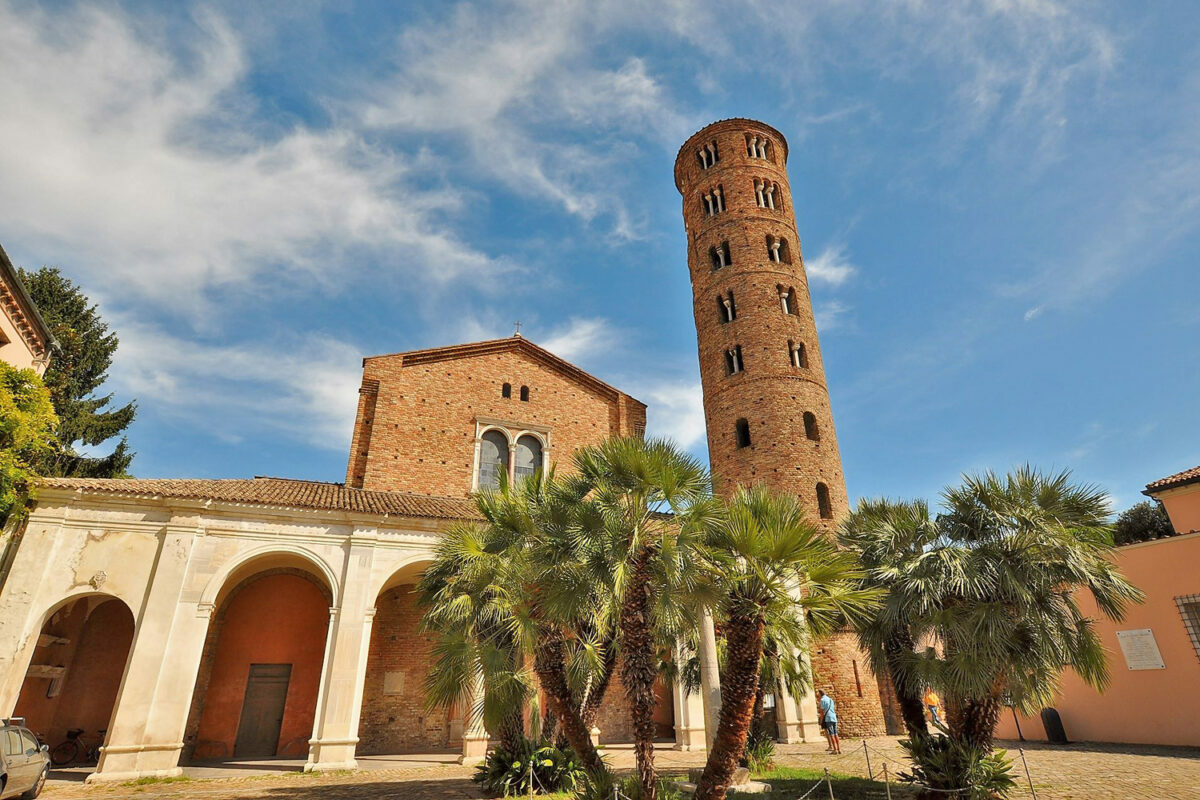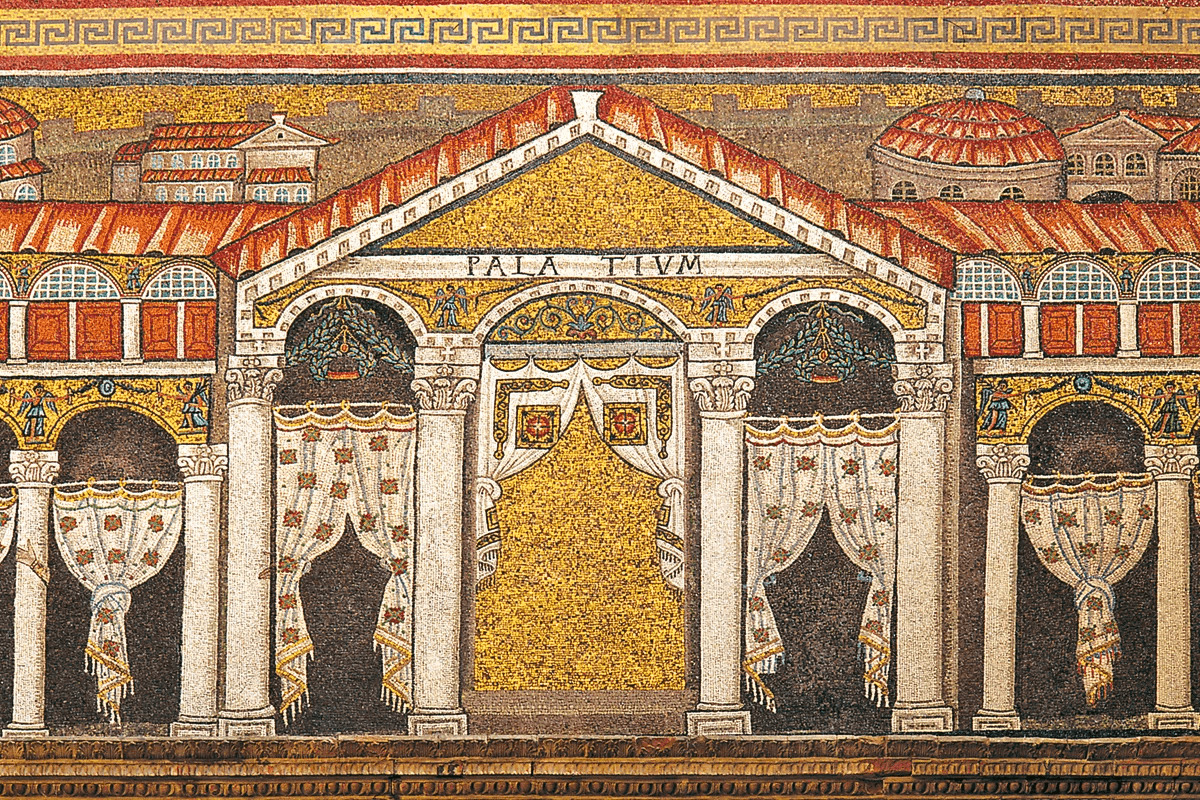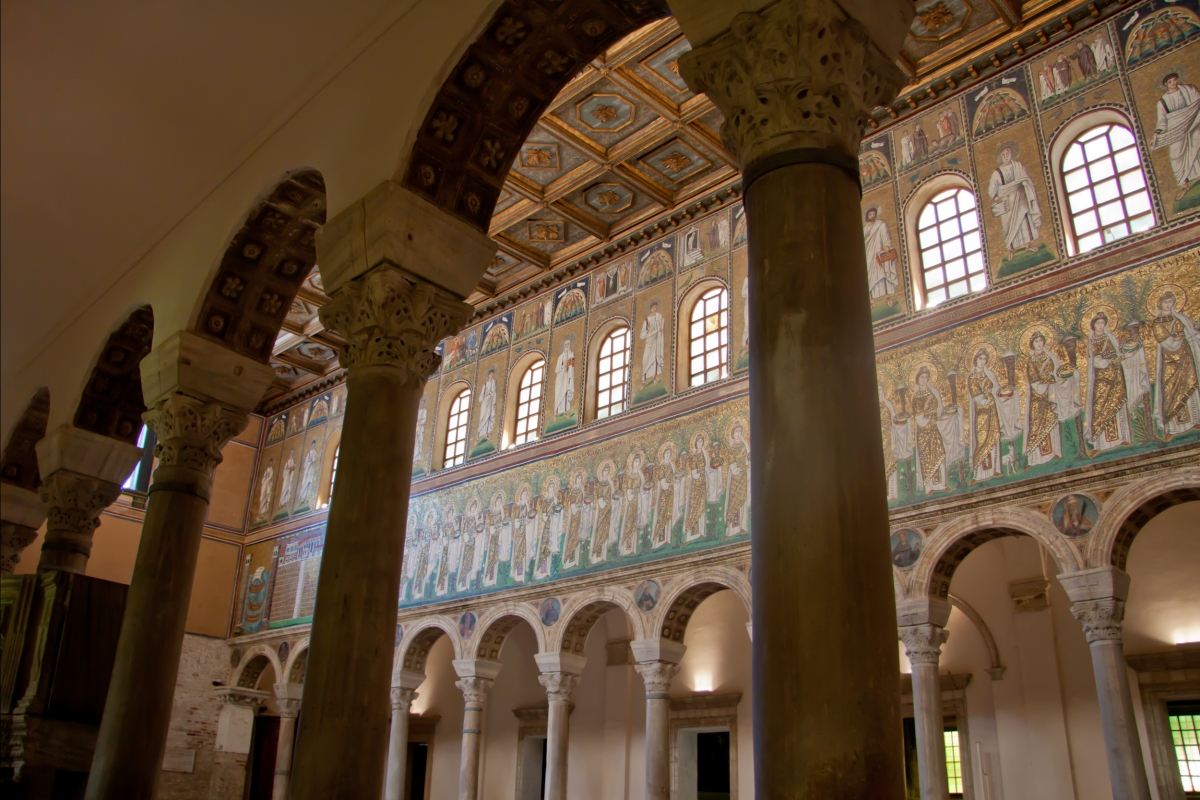In Via di Roma — not far from MAR – Ravenna Art Museum — stands in its grandeur the bell tower of one of the most ancient churches in the city, UNESCO World Heritage monument since 1996.
We’re talking about the BASILICA OF SANT’APOLLINARE NUOVO – not to be mistaken with the Basilica of Sant’Apollinare in Classe, which is just outside the city.
It was built between the end of the 5th and the beginning of the 6th century AD by the Gothic king Theodoric (493-526), next to his palace, as an Arian palatine chapel.
“King Theoderic had this church erected from its foundations in the name of Jesus Christ, our Lord”
So says the inscription reported by Andrea Agnello in his Liber Pontificalis, a book on the history of the Church in Ravenna (9th century). According to the historian, the inscription was located in the apse.
A walk in history
Originally dedicated to the Saviour and consecrated to the Arian cult, after the Byzantine Empire conquered the city (mid 6th century), the church was converted to the Orthodox religion.
It was therefore dedicated to St. Martin, bishop of Tours, who stood out for the fight against the heretics.
According to tradition, in the 9th century the remains of the holy founder of the church of Ravenna, St. Apollinaris, were transferred here from Classe. On this occasion, the church was definitely named after Apollinaris, but with the suffix “Nuovo” (new).
Architecture and mosaics
Seen from the outside, the Basilica of Sant’Apollinare Nuovo is architecturally quite simple. The tympanum façade, made of brick, is framed by two pilasters and a mullioned window, surmounted by two small windows.
Originally, it must have been enclosed by a four-sided portico, but it is now preceded by a simple and harmonious marble portico dating back to the 16th century.
On the right, the cylindrical bell tower, which is typical of the Ravenna architecture, dates back between the 9th and the 10th century.
Inside, the basilica boasts one of the most famous Early Christian and Late Antique mosaic cycles in the world.
This extraordinary mosaic decoration runs through the entire central nave. It is a masterpiece of unparalleled value from a stylistic, iconographic and ideological point of view.
The basilica shows the evolution of the Byzantine mosaic — from Theodoric’s to Justinian’s age.
The 26 Christological scenes, dating back to Theodoric, are the largest monumental cycle of the New Testament and, among those made of mosaic, are the oldest ones to date.









